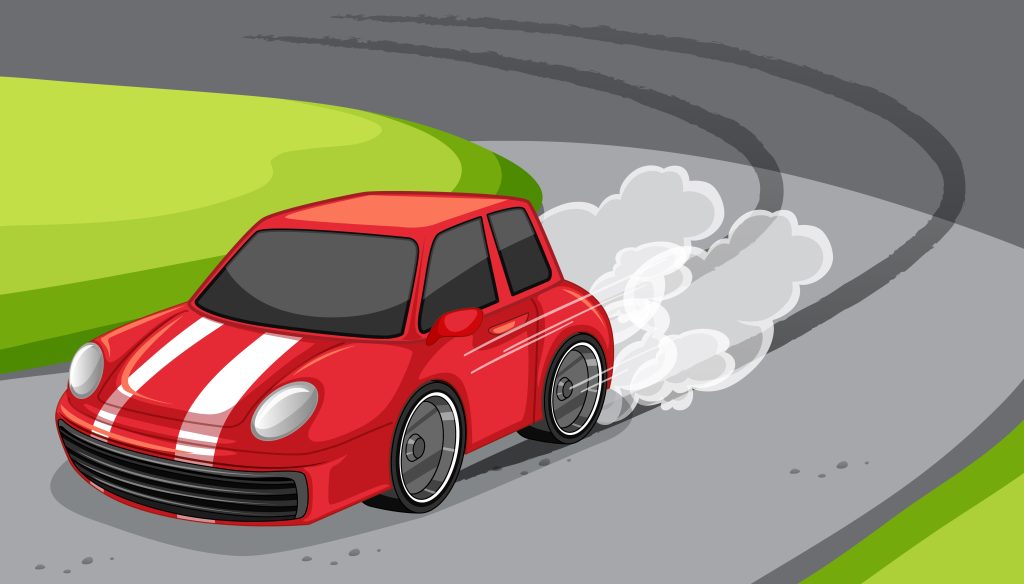Have you ever considered a car race to be like a symphony, with each stage acting as a different movement, building up to a crescendo? Well, get ready to be intrigued as we explore the fascinating world of car racing stages. From the NASCAR Cup Series to other racing formats, the number of stages can vary, and each stage serves a specific purpose. But how many stages are there exactly? And what impact do they have on the outcome of the race? Get ready to uncover the answers as we unravel the intricacies and strategic nuances of car racing stages.
NASCAR Cup Series Stage Format
What is the format of the NASCAR Cup Series stages and how do they work? The NASCAR Cup Series stages were adopted in 2017 and have become a defining feature of the sport. Most Cup races consist of three stages, with the first two stages being approximately a quarter of the race distance each, and the final stage making up over half of the race. The lengths of the stages are determined before the race begins. At the end of each stage, there is a green/white checkered flag, except for the final stage which ends with the traditional chequered flag.
In terms of points distribution, the top 10 finishers in each stage receive points on a 10-1 scale, with the stage winners also receiving one playoff point. These points contribute to the NASCAR points standings and help determine playoff eligibility. The impact of stages on championship standings is significant, as the points awarded in each stage can greatly influence a driver’s overall race position and championship position.
The introduction of stages in NASCAR Cup races has also brought about strategic decisions for teams and drivers. They must consider factors such as when to pit, when to be aggressive, and when to conserve tires and fuel. This adds an additional layer of excitement and suspense to the races.
Furthermore, the introduction of stages has increased fan engagement and interest. The division of the race into three stages provides more opportunities for drivers to earn points and rewards, keeping fans captivated throughout the entire race. Overall, the NASCAR Cup Series stages format has enhanced strategy and decision-making, added excitement and suspense, and increased fan engagement and interest.
Purpose and Benefits of Stage Racing
Stage racing serves a purpose in car racing by enhancing competitiveness and entertainment, injecting excitement, unpredictability, and additional strategy into the race. One of the benefits of stage racing is that it enhances strategy and decision-making. Drivers and teams must make strategic decisions based on the stage format, such as when to pit, when to push for positions, and when to conserve their equipment. This adds complexity and intrigue to the race, as teams must carefully analyze their options to maximize their chances of success.
Another benefit of stage racing is that it adds additional excitement and suspense to the race. With the introduction of stages, the race is broken down into distinct segments, creating moments of heightened excitement and thrilling battles on the track. This keeps fans engaged and on the edge of their seats, as they eagerly anticipate the outcome of each stage and the final result.
Stage racing also increases fan engagement and interest. By dividing the race into stages, fans have more opportunities to cheer for their favorite drivers and witness exciting on-track battles. Additionally, the points system in stage racing rewards drivers for their performance throughout the race, giving fans a clearer understanding of how their favorite drivers are performing and how it impacts the overall standings.
Definition and Purpose of Stages in Car Racing
The introduction of stages in car racing has revolutionized the sport by injecting excitement, unpredictability, and additional strategy into the race. Stages in car racing can be defined as distinct segments within a race that enhance competitiveness and entertainment. They create moments of heightened excitement and thrilling battles on the track. The purpose of stages is to keep the pack together, prevent one driver from dominating, and increase competitiveness and excitement. Stages benefit both drivers and fans by adding complexity to pit strategies and providing more opportunities for drivers to earn points. They significantly influence a driver’s quest for race wins and championships and amplify excitement in races. Stages have transformed the car racing experience and breathed new life into the sport. They have become a defining feature in the sport, showcasing the ever-evolving nature of motorsport. Stages ensure fans and drivers remain captivated by car racing and hold the key to understanding car racing today. The evolution and reception of stages have been positive, as they contribute to the dynamic and competitive nature of car racing and enhance the viewing experience.
Basics of Car Racing Stages
Car racing stages involve dividing a race into distinct segments, creating a structured and competitive format for drivers to showcase their skills and engage fans. In NASCAR races, there are typically three stages: Stage 1, Stage 2, and the Final Stage. Each stage has its unique objectives, such as earning stage points or improving track position. Pit strategies become more complex as teams need to make strategic decisions based on the stage format. Points are awarded to top finishers in each stage, with the stage winner receiving the most points. These points are cumulative throughout the race, and tiebreakers are used to determine higher-ranking drivers in case of points tie. The cumulative stage points can significantly impact a driver’s overall race position and championship standings. Stages not only add excitement and intensity to races, but they also create opportunities for drivers to showcase their skills and engage fans. By understanding the basics of car racing stages, you can appreciate the strategy and excitement on the track.
| Stages | Pit Strategies | Stage Objectives | Tiebreakers |
|---|---|---|---|
| Stage 1 | Vary pit strategies based on track position | Earn stage points, improve track position | Number of stage wins, race wins, overall consistency |
| Stage 2 | Optimize pit strategy for track position | Earn stage points, set up for the final stage | Number of stage wins, race wins, overall consistency |
| Final Stage | Plan pit strategy for race win | Compete for the race win and highest championship points | Number of stage wins, race wins, overall consistency |
Scoring and Points System in Car Racing Stages
The scoring and points system in car racing stages play a crucial role in determining a driver’s performance and championship standings. Here are some important aspects of the scoring and points system in car racing stages:
- Points distribution: Points are awarded based on performance in each stage. The stage winner receives the highest number of points, while points are also awarded to the top finishers in each stage, typically down to a certain position. Even drivers who do not finish in top positions receive points for completing the stage.
- Tiebreakers: In case of points tie, tiebreakers are used to determine higher-ranking drivers. Factors considered may include the number of stage wins, race wins, or overall consistency. Tiebreakers ensure fair competition and determine final standings.
- Driver performance: The points earned in each stage are cumulative throughout the race, and performing well in multiple stages can put drivers in an advantageous position for the final stage and race win. Consistent stage performance can also contribute to overall championship standings.
- Fan involvement: The points system in car racing stages encourages competitive racing and rewards drivers for their performance throughout the entire race. This increases fan engagement and interest as they can follow their favorite drivers and anticipate exciting battles on the track.
Impact of Stages on Race Outcome
Stages in car racing have a significant impact on the outcome of the race, influencing a driver’s overall position and championship standings. The cumulative stage points earned by drivers throughout the race can greatly affect their championship position. Performing well in multiple stages can put drivers in an advantageous position for the final stage and ultimately the race win. Winning the final stage carries the most prestige and highest number of championship points. Stages add excitement and intensity to races, leading to intense on-track battles and creating natural moments of excitement for both fans at the track and those watching on television. The stage format also requires strategic decisions from drivers and teams, as they must consider factors such as when to pit and how aggressively to compete in each stage. This strategic element adds complexity to the race and enhances the viewing experience for fans. Overall, the introduction of stages in car racing has not only increased fan engagement but also added a new dynamic to the sport, making the outcome of races more thrilling and unpredictable.
Strategic Decisions and Fan Engagement in Car Racing Stages
Strategic decisions play a crucial role in car racing stages, requiring drivers and teams to carefully consider their approach and make calculated choices throughout the race. Here are four key points to understand the impact of strategic decisions and fan engagement in car racing stages:
- Competition Dynamics: Stages incentivize aggressive competition and push drivers to perform their best. The format adds complexity to pit strategies and encourages teams to strategize for optimal performance in each stage.
- Race Strategy: Drivers must analyze the race conditions, tire wear, and fuel consumption to determine when to pit, how many tires to change, and when to make aggressive moves on the track. These strategic decisions can significantly impact a driver’s position in the race.
- Fan Engagement: Car racing stages provide natural opportunities for commercial breaks, supporting television broadcasts. The format enhances the viewer experience by allowing fans to follow their favorite drivers and anticipate exciting battles. Stages create moments of heightened excitement and thrilling battles on the track.
- Viewer Experience: Understanding the strategic decisions made by drivers and teams enhances appreciation for the strategy and excitement on the track. It allows viewers to analyze and discuss race tactics, making the viewing experience more engaging and immersive.
Evolution and Reception of Car Race Stages
Over the years, car race stages have evolved to become a dynamic and popular feature in the world of motorsport. The evolution of car race stages has had a significant impact on the reception of the sport. The introduction of stages has added a new level of excitement and strategy to races, captivating both drivers and fans alike. The strategic decisions made by teams and drivers based on the stage format have enhanced the competitiveness of the races. Stages create natural opportunities for commercial breaks, supporting television broadcasts and ensuring fan engagement. The reception of car race stages has been overwhelmingly positive, as they provide fans with more opportunities to follow their favorite drivers and anticipate thrilling battles on the track. The evolution of car race stages has transformed the way we engage with racing, adding complexity to pit strategies and rewarding consistency in performance. Overall, the reception of car race stages has been excellent, as they have brought new life to the sport and contributed to its dynamic and competitive nature.


